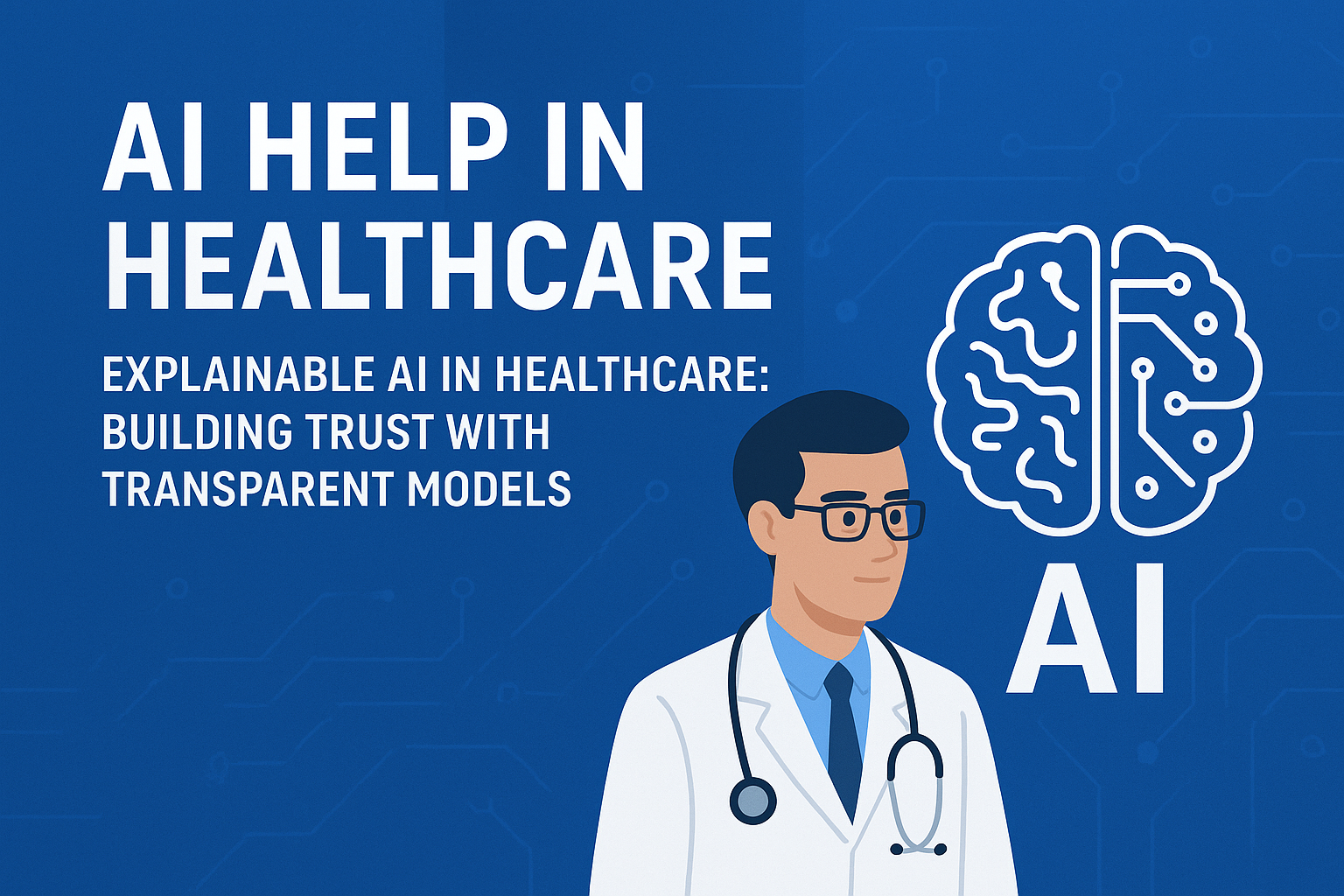Explainable AI in Healthcare: Why Transparency Builds Trust

AI is changing healthcare faster than ever—helping doctors detect diseases early, read medical images, predict risks, and make treatment decisions.
But there’s one big question everyone keeps asking:
How does the AI actually make its decisions?
If doctors can’t understand why an AI model says something is risky or abnormal, they won’t (and shouldn’t) rely on it.
This is where Explainable AI (XAI) becomes extremely important.
What Is Explainable AI, Really?
Explainable AI means creating models that don’t just give results—they explain the reasoning behind those results in a simple and clear way.
It answers questions like:
Why did the AI think this X-ray shows pneumonia?
What patient factors led to a high diabetes risk score?
Which symptoms influenced the prediction the most?
In short:
XAI brings transparency to AI, especially in critical fields like healthcare.
Why Do We Need Explainable AI in Healthcare?
Healthcare is a high-stakes field. A small mistake can have big consequences. So trust and clarity matter a lot.
Here are some real, human reasons why XAI is so important:
1️. Doctors need to trust the system
If AI highlights the exact lung region in an X-ray that looks abnormal, doctors feel more confident using it.
2️. It improves patient safety
When every decision is explainable, errors become easier to detect before they impact the patient.
3️. Patients deserve clarity
Imagine telling a patient:
"The AI says you might be at risk—but I don’t know why."
That’s unacceptable.
4️. Regulations demand transparency
Governments and medical bodies now expect AI systems to justify their decisions.
5️. It helps reduce bias
XAI reveals if a model is making unfair decisions—for example, relying too much on age or gender.
How Explainable AI Helps in Real Healthcare Situations
1. Medical Imaging
AI highlights the exact region in an MRI or CT scan that triggered the prediction. Doctors can see what the AI saw.
2. Disease Risk Prediction
XAI shows which factors—like blood pressure or lifestyle—are contributing to a patient’s risk score.
3. ICU Early Alerts
AI can warn about patient deterioration and explain which vitals triggered the alert.
4. Personalized Treatment
The model shows why a certain treatment might work better for one patient compared to another.
Popular XAI Methods (in simple words)
1. SHAP
Shows how much each feature (like heart rate or cholesterol) pushes the prediction up or down.
2. LIME
Explains one prediction at a time using a simpler model.
3. Grad-CAM
Highlights important areas in medical images.
4. Rule-based Models
Straightforward “if–then” rules that anyone can understand.
5. Counterfactuals
Explains what needs to change to get a different result.
Example: “If blood sugar dropped by X amount, the risk would reduce.”
Challenges: Why Isn’t XAI Everywhere Yet?
1. Deep learning models are complex
2. all explanations are easy for doctors to understand
3. Hard to integrate XAI into hospital software
4. Sometimes explanations oversimplify the truth
5. Even so, progress is happening fast.
Best Practices for Building Trustworthy Healthcare AI
- Use models that balance accuracy and simplicity
- Show explanations in a doctor-friendly way
- Combine multiple explanation methods
- Always show confidence levels
- Monitor predictions over time to ensure consistency
The Future of XAI in Healthcare
The future is promising:
- Doctors + AI working together as a team
- Standard rules for explainability
- AI tools that explain themselves naturally
- Patients getting easy-to-understand explanations
As healthcare technology evolves, one thing becomes clear:
AI must be transparent.
AI must be trustworthy.
And explainable AI is the path to that trust.
If you want, I can also:
- Make it shorter for LinkedIn
- Create a more professional corporate version
- Convert this into a PDF
- Add SEO keywords and meta tags